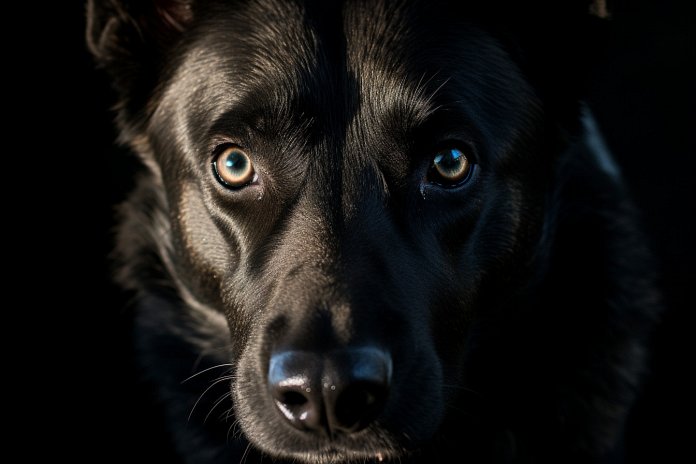
The world can be a scary place, but for dogs, it can be even scarier. Dogs can become fearful due to a variety of reasons, including bad breeding, lack of socialization, and mistreatment. Fearful dogs may exhibit signs such as shaking, whining, panting, and chewing. They may also develop noise phobias and separation anxiety. Understanding the reasons behind a dog’s fear and providing them with the proper socialization and support can help them overcome their fears and lead a happier life.
Signs a Dog is Fearful
A dog’s fear can be traced back to their wolf ancestors, as well as their breeding and upbringing. Dogs that come from puppy mills or have not been properly socialized may exhibit signs of fear such as cowering, tail tucking, and snapping. These dogs may be scared of everyday noises and unfamiliar situations. Ethical breeders understand the importance of socialization and ensure that puppies are introduced to different experiences in a positive way.
The History of Dogs Being Scared
Contrary to popular belief, wolves, who are closely related to dogs, can also display fear towards strangers. Studies have shown that wolves raised in captivity can form close bonds with humans, similar to dogs. In the 1950s, a study on the social behavior of dogs highlighted the importance of early socialization in puppies. Since then, socialization has become a key component in raising confident and well-adjusted dogs.
The Science of Scared Dogs
Dogs’ fear of certain things, such as men or unfamiliar objects, may not always be due to past abuse but rather unfamiliarity. Dogs have different senses and perceptions than humans, and their fear may stem from their heightened senses and reactions to stimuli. Socialization plays a crucial role in helping dogs be less scared.
Helping Dogs be Less Scared
Many fearful dogs have not been properly socialized, which can lead to a lifetime of fear and anxiety. It is important for breeders and owners to prioritize socialization and expose puppies to different people, objects, and noises in a positive and controlled manner. For dogs that are already fearful, desensitization techniques can be used to help them overcome their fears. This can include gradually exposing them to the thing they fear and providing them with positive reinforcement.
Conclusion
Understanding and addressing a dog’s fear is crucial for their overall well-being. Dogs can become fearful due to various factors, including genetics, lack of socialization, and mistreatment. By providing them with the proper socialization, support, and desensitization techniques, dogs can learn to overcome their fears and lead a happier, more confident life.
“Socialization is the key to dogs being less scared. With the right socialization, a puppy enters their new life with a relaxed posture, tail wagging, and perky ears. If not properly socialized, they may be constantly on high alert, reacting negatively to everyday noises and experiences. Even if a dog has developed fears, through gradual desensitization and positive experiences, they can learn to face their fears and live less scared lives.”

Tips & Things to Know
1️⃣ Proper socialization is crucial for dogs to prevent fear and anxiety. Dogs that have not been exposed to everyday noises and experiences may become scared and anxious in unfamiliar situations.
2️⃣ Recognize the signs of fear in dogs, such as whining, shaking, panting, and chewing. Understanding these signs can help you identify when your dog is feeling fearful and take appropriate steps to help them feel more comfortable.
3️⃣ Desensitization and counter-conditioning techniques can be effective in helping dogs overcome their fears. By gradually exposing them to the things they are afraid of in a controlled and positive way, you can help them build confidence and reduce their fear response.
Frequently Asked Questions, Answered ✅
1. What are some signs that a dog is fearful?
– Whining, shaking, panting, chewing, yawning, whimpering, snapping, averting eyes
2. What are some things that can make a dog fearful?
– Being left alone, not getting proper socialization, loud noises, mistreatment, irresponsible dog breeders, genetics
3. How does a dog’s fear relate to their wolf ancestors?
– Dogs are linked to wolves through DNA, and studies have shown that wolves reared in captivity can form close ties with humans. Dogs and wolves have similar behaviors and emotions.
4. How does socialization play a role in a dog’s fearfulness?
– Proper socialization in puppyhood can help a dog adapt well to new experiences and environments, reducing fear and anxiety.
5. How can owners help their fearful dogs?
– Desensitization and gradual exposure to the things that scare them, such as loud noises or unfamiliar people, can help a dog overcome their fear. Playing soothing music or engaging in distracting activities can also help take their mind off the fear.